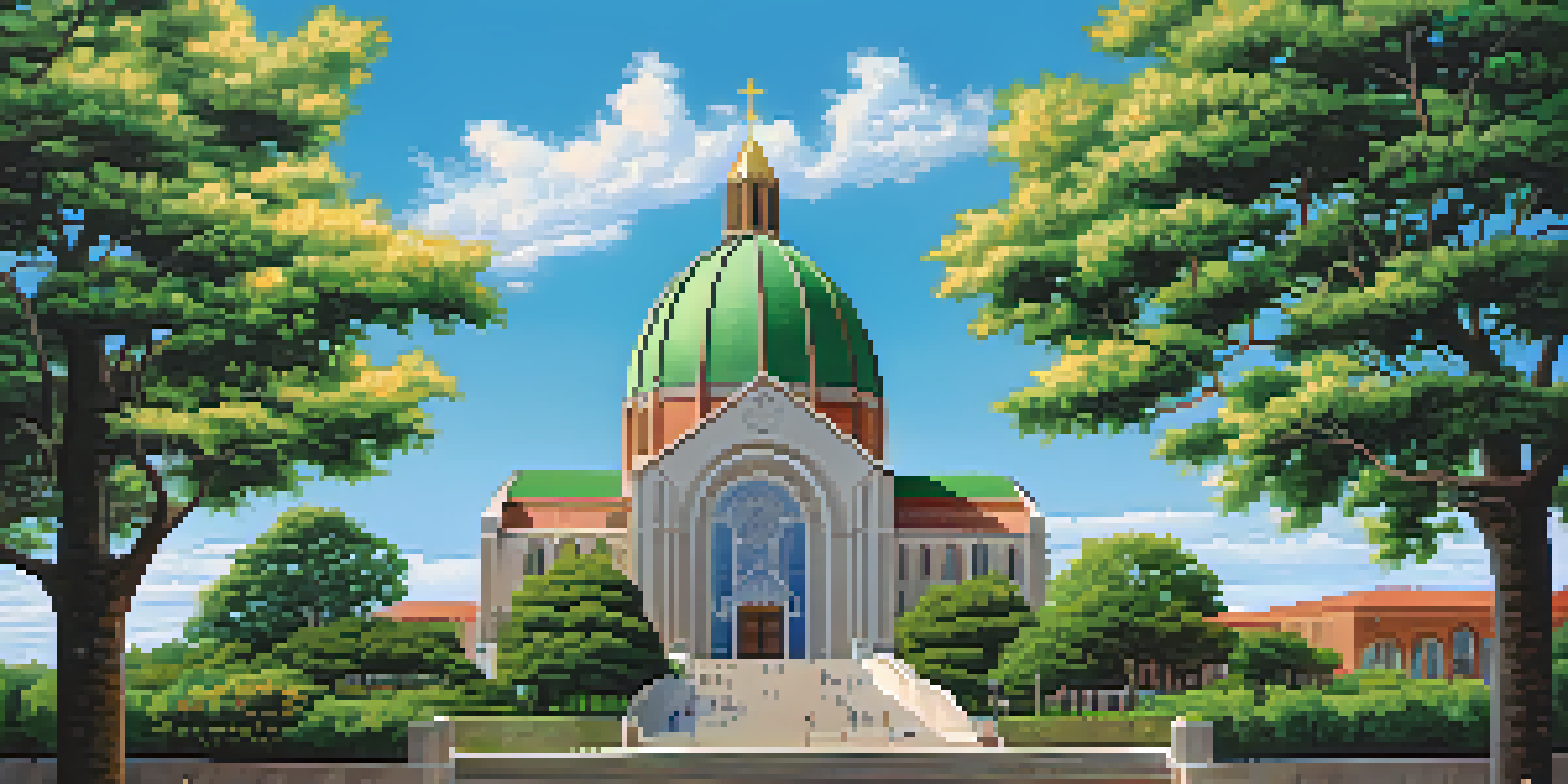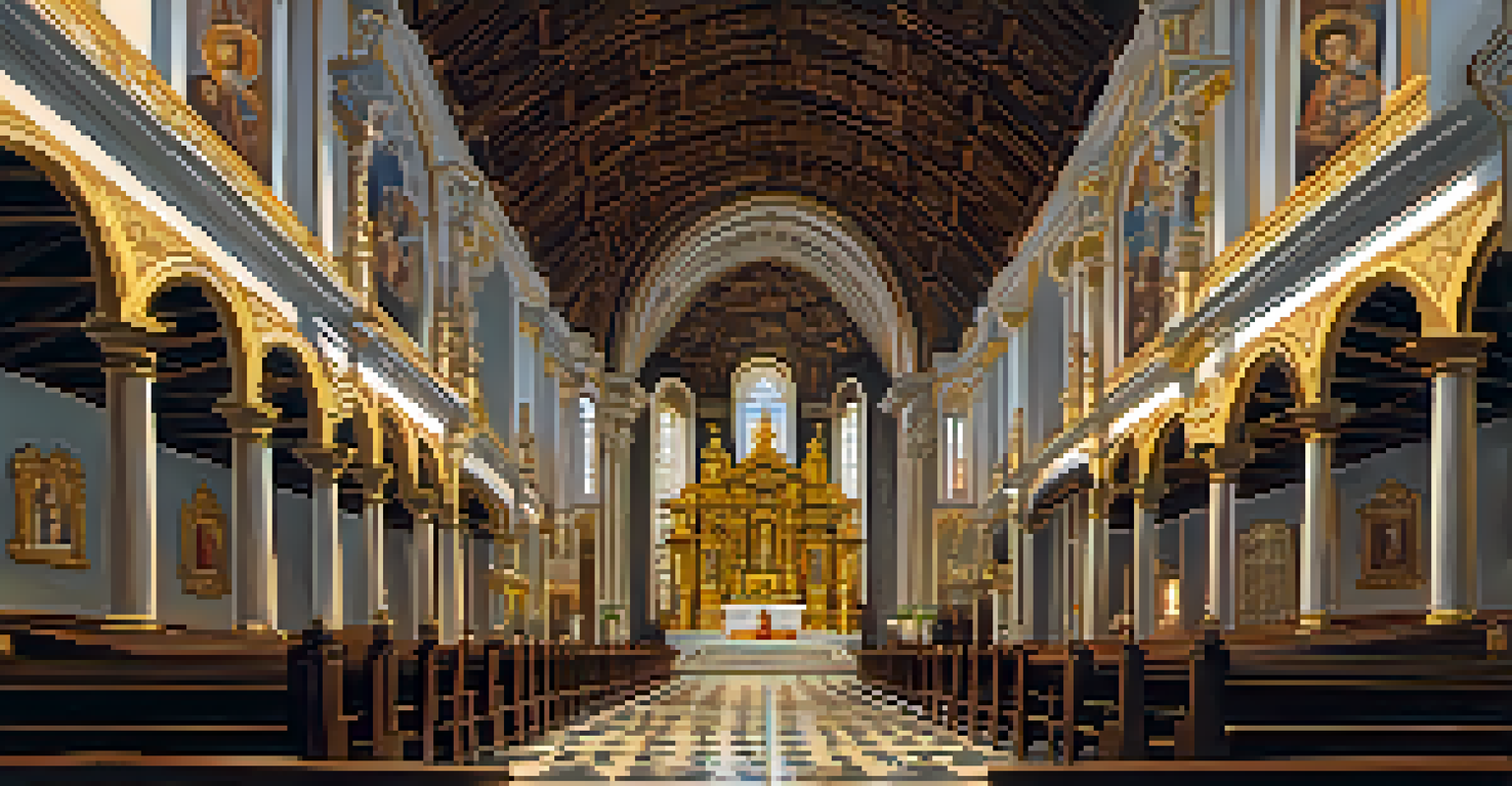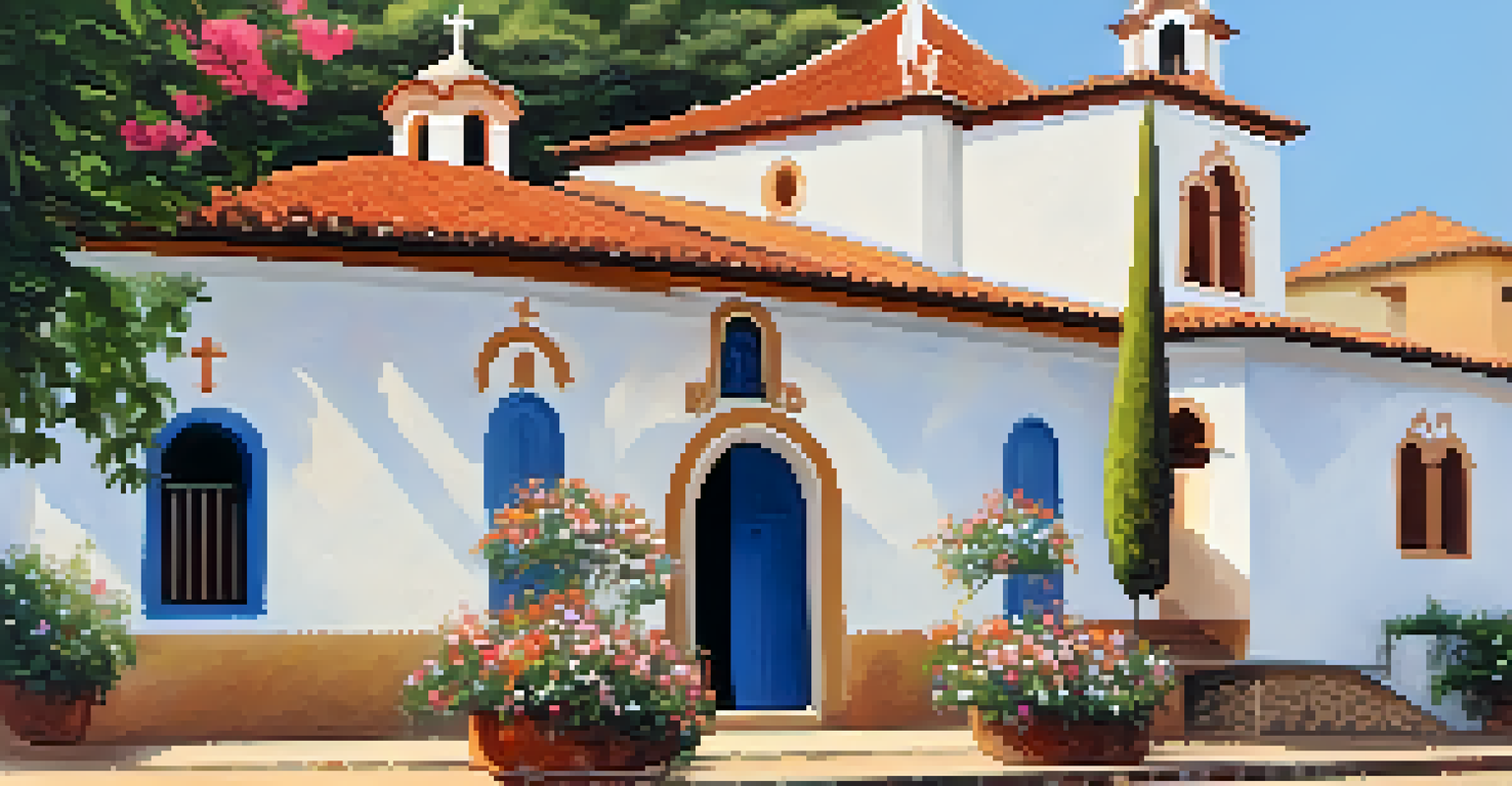The Stunning Churches of Brazil: Architectural Treasures

The Rich History Behind Brazil's Architectural Gems
Brazil's churches are not just places of worship; they are a testament to the country's rich history and cultural tapestry. Many of these structures date back to the colonial period, reflecting the influence of Portuguese architecture infused with local traditions. The blend of Baroque, Gothic, and Neoclassical styles tells a story of a nation evolving through its faith and artistry.
Architecture is the learned game, correct and magnificent, of forms assembled in the light.
Take, for instance, the stunning São Francisco Church in Salvador, which is a prime example of Brazilian Baroque architecture. Its intricate gold leaf interior and elaborate carvings leave visitors in awe, illustrating the craftsmanship of the time. Each church has its own narrative, showcasing how Brazil's diverse heritage has shaped its architectural landscape.
As you explore these architectural treasures, you'll not only appreciate their beauty but also understand the historical context that gave rise to them. Each church stands as a monument to the people who built them, preserving stories of devotion, artistry, and cultural fusion.
Iconic Churches: A Journey Through Time and Space
Among Brazil's most iconic churches is the Basilica of the National Shrine of Our Lady of Aparecida. This vast, modern structure is a pilgrimage site for millions and features stunning contemporary architecture that captures the heart of Brazil’s spirituality. With its grand dome and beautiful stained glass, it contrasts beautifully with older churches, showcasing the evolution of religious architecture.

Another must-visit is the Cathedral of Brasília, designed by Oscar Niemeyer. Its unique, modernist design resembles hands reaching towards the sky, symbolizing a connection to the divine. This church stands out not just for its architectural innovation but also for its role in Brazil's capital, representing a new era of design in the 20th century.
Brazil's Churches Reflect Rich History
These architectural gems showcase the fusion of Portuguese styles and local traditions, narrating Brazil's cultural evolution.
These iconic churches not only serve religious purposes but also attract tourists and architecture enthusiasts alike. As you visit, you’ll find that each building has a distinct personality, inviting you to delve deeper into their stories and the artistic expressions they embody.
The Splendor of Colonial Baroque Churches
Colonial Baroque churches in Brazil are some of the most breathtaking examples of religious architecture you'll ever see. With their ornate facades and lavish interiors, these churches reflect the wealth and power of the colonial era. Cities like Ouro Preto are renowned for their stunning Baroque churches, like the Church of Saint Francis of Assisi, which showcases intricate woodwork and golden altars.
The more I read, the more I acquire, the more certain I am that I know nothing.
What makes these churches even more fascinating is the local craftsmanship involved in their creation. Artisans poured their hearts into the decorations, often using materials sourced from nearby regions, creating a unique blend of local and European influences. This craftsmanship is evident in the detailed sculptures and paintings that adorn the interiors, inviting visitors to appreciate the artistry.
As you wander through these colonial churches, it's easy to feel a sense of wonder. They are not just places of worship but also artistic masterpieces that reflect the spirit and culture of Brazil's past, encouraging visitors to connect with history in a profound way.
Modern Architectural Innovations in Sacred Spaces
While Brazil is known for its historical churches, modern architecture has also left its mark on the landscape of religious buildings. Contemporary churches are embracing innovative designs that reflect the changing beliefs and needs of society. The Church of Saint John the Baptist in Rio de Janeiro, for example, is a striking example of modern architecture, featuring sharp angles and a striking glass facade.
These modern churches often focus on sustainability and community engagement, incorporating eco-friendly materials and designs that invite interaction. They redefine what a church can be, moving beyond traditional designs to create spaces that resonate with today's spiritual seekers. This shift highlights how architecture can evolve alongside cultural and societal changes.
Modern Churches Embrace Innovation
Contemporary religious buildings in Brazil are redefining sacred spaces through innovative designs that reflect societal changes.
Visiting these modern churches offers a glimpse into the future of religious architecture in Brazil. They challenge preconceived notions of what sacred spaces should look like, reflecting a dynamic and inclusive approach to spirituality.
Hidden Gems: Lesser-Known Churches Worth Exploring
Beyond the well-known landmarks, Brazil is home to countless hidden gem churches that are equally enchanting. For instance, the Church of St. Anthony in the small town of Tiradentes boasts a charming facade and a serene atmosphere, perfect for reflection. These lesser-known churches often provide a more intimate experience, away from the bustling tourist crowds.
Exploring these hidden gems not only allows you to discover unique architectural styles but also to engage with local communities. Many of these churches host traditional festivals and events, offering visitors a chance to experience the vibrant culture of Brazil firsthand. Interacting with locals can deepen your understanding of the significance these churches hold in their lives.
So, if you venture off the beaten path, you’ll uncover beautiful stories and architectural wonders that aren’t in the guidebooks. Each hidden church has its own character, waiting for you to discover its beauty and significance.
The Role of Churches in Brazilian Culture and Society
Churches in Brazil are more than just places of worship; they are integral to the social fabric of communities. They often serve as gathering places for celebrations, weddings, and community events, fostering a sense of belonging among locals. This role underscores the importance of these architectural wonders in everyday life, as they bring people together.
Moreover, many churches actively engage in charitable work, addressing various social issues within their communities. For instance, they might host food drives or provide support for the underprivileged, embodying the spirit of service that is a core tenet of many faiths. This outreach extends the churches' influence beyond their walls, making them vital parts of their communities.
Preservation Vital for Cultural Heritage
Efforts to protect Brazil's historic churches are essential to maintaining their architectural beauty and historical significance for future generations.
Understanding the role of these churches in Brazilian culture enriches your appreciation of their architecture. They stand as symbols of hope, community, and resilience, reflecting the heart of Brazilian society.
Preservation Efforts: Protecting Brazil's Architectural Heritage
As with any cultural treasure, the preservation of Brazil's churches is of utmost importance. Many of these historic buildings are under constant threat from natural wear, urban development, and environmental factors. Organizations dedicated to heritage conservation work tirelessly to protect these architectural masterpieces, ensuring they remain for future generations to admire.
Efforts to preserve these churches often involve meticulous restoration work, requiring skilled artisans to replicate original designs and materials. This not only helps maintain the aesthetic beauty of the churches but also safeguards the historical significance they hold. Engaging the community in preservation initiatives fosters a sense of ownership and pride in their heritage.

By visiting and supporting these churches, you contribute to the ongoing preservation efforts. Each ticket purchased or donation made helps ensure that these architectural treasures continue to tell their stories for years to come.